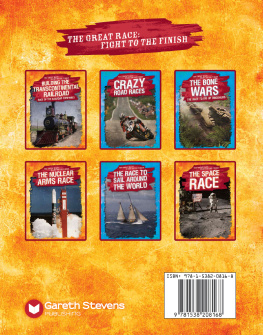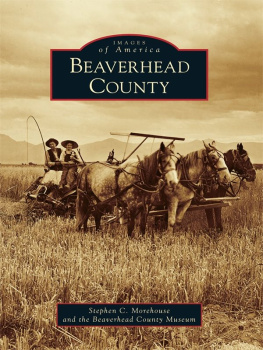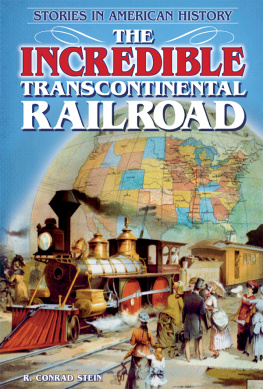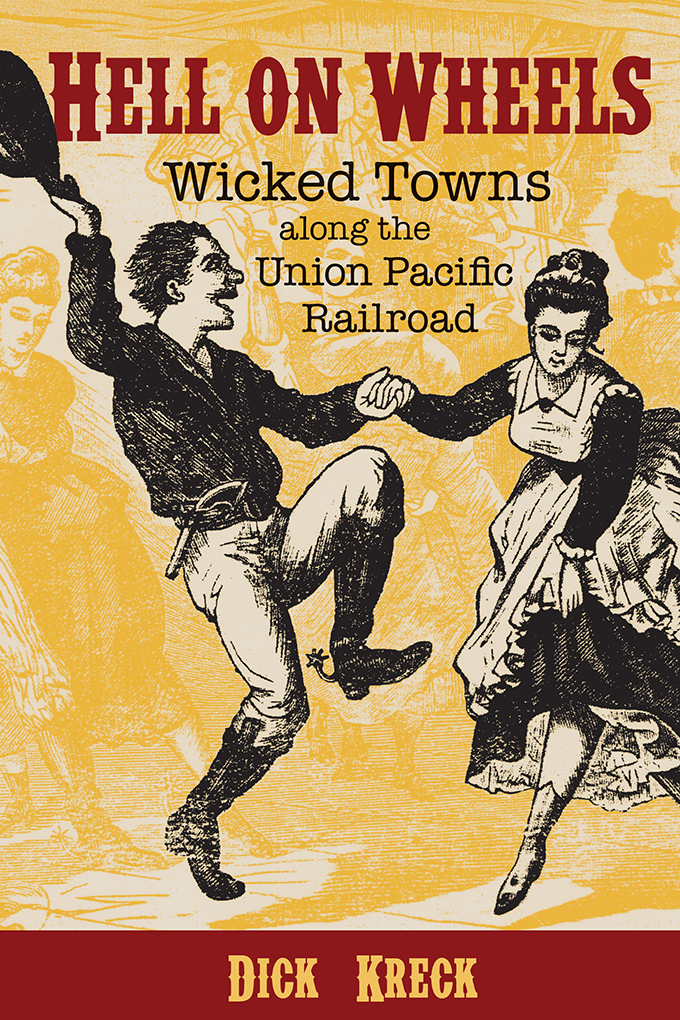ALSO BY DICK KRECK
Colorados Scenic Railroads
Denver in Flames
Murder at the Brown Palace
Anton Woode: The Boy Murderer
Smaldone: The Untold Story of an American Crime Family
Text 2013 Dick Kreck
All rights reserved. No part of this book may be reproduced or transmitted in any form or by any means, electronic or mechanical, including photocopying, recording, or by an information storage and retrieval systemexcept by a reviewer who may quote brief passages in a reviewwithout permission in writing from the publisher.
Library of Congress Cataloging-in-Publication Data
Kreck, Dick.
Hell on Wheels : the wicked towns along the Union Pacific Railroad / Dick Kreck.
pages cm
Includes bibliographical references and index.
ISBN 978-1-55591-948-1 (alkaline paepr)
1. West (U.S.)--History, Local. 2. Union Pacific Railroad Company--History--19 th century. 3. Cities and towns--West (U.S.)--History--19 th century. 4. Railroad stations--West (U.S.)--History--19 th century. 5. West (U.S.)--Biography. 6. West (U.S.)--Social life and customs. 7. Frontier and pioneer life--West (U.S.) I. Title.
F590.7.K74 2013
978.02--dc23
2013003776
Printed in the United States of America
0 9 8 7 6 5 4 3 2 1
Design: Jack Lenzo
Cover image originally published in Historic Sketches of the Cattle Trade of the West and Southwest by Joseph G. McCoy (Kansas City, MO: Ramsey, Millett & Hudson, 1874).
Fulcrum Publishing
4690 Table Mountain Dr., Ste. 100
Golden, CO 80403
800-992-2908 303-277-1623
www.fulcrumbooks.com
Contents
Chapter One
Chapter Two
Chapter Three
Chapter Four
Chapter Five
Chapter Six
Chapter Seven
Chapter Eight
Chapter Nine
Chapter Ten
Chapter Eleven
Chapter Twelve
Chapter Thirteen
Chapter Fourteen
Chapter Fifteen
Chapter Sixteen
Foreword
Think of it. Before railroads spanned the continent, travelers seeking to go to California or other points west had three difficult choices: They could board a ship in New York or Boston and sail for Panama, disembark there and cross the malaria-infested isthmus by a combination of boat and wagon, then once on the Pacific side, board another ship and set sail againall in all, a 5,250-mile journey that could last more than a month. Or they could forgo the isthmus and its death-carrying mosquitoes by sailing around South Americas turbulent and storm-tossed Cape Horn and head directly for San Francisco, a four-month voyage of more than thirteen thousand miles. For folks living in Ohio or Kentucky or some other interior state, add to these distances and times the trek from home to an Eastern Seaboard port, an additional journey that could take days, even weeks.
But whether headed for California or Oregon or the Pikes Peak goldfields, most westbound travelers elected to go by a third route: a two-thousand-mile, five-month wagon-train journey over the great Platte River, Oregon, and California trails. Called variously argonauts, forty-niners, Pikes Peakers, overlanders, and emigrants, these men, women, and children daily faced a host of life-threatening dangers, from crossing riverbeds full of quicksand to rattlesnakes, bad water, tainted food, flash floods, precipitous mountain roads, windstorms, gunshot accidents, and the occasional Indian attack. Ten to twenty miles a day, every day numbingly the same. Up before dawn to feed, water, and yoke or harness the animals, on the move by sunup, break at noon, back on the trail until nearly sundown, then watching over cooking fires, tending to the herds, repairing all the things that needed to be repaired, followed by a too short sleep, day after day after day, week after week. But disruptions to the routine did occur: cholera and smallpox outbreaks, busted axles, violent arguments, the thousand and one things that could happenand didon a long overland trek. Many were lulled to boredom by the steady creak of the wagons, the sameness of the landscape, until the crack of a broken wheel or the piercing sound of a childs scream or the loud boom of a shotgun suddenly snapped them to attention. Still, between 1842 and 1866 more than a half million people hit the trails. Not all of them made it. Diarists, many of them women, told of passing grave after grave spread along the trail, so many, in fact, that after a while they stopped counting.
Then, after the Civil War, Americans turned their eyes on the nations newest and greatest construction project: the building of the first transcontinental railroad, a project that promised to reduce the five-month crossing to just eight days. Eight days. In Hell on Wheels , best-selling author Dick Kreck takes readers to the bridge between the wagons roads and the rails west: the hell-bent-for-leather end-of-track towns that instantly erupted when winters cold or a shortage of supplies forced a delay in construction. Where they appeared was anybodys guess; it all depended on the progress the workers made as they gandy-danced across the prairie. But wherever they sprang up, they shared certain characteristics. They were instant cities, populated overwhelmingly by young men, most of whom carried fistfuls of cash in their pockets and were more than willing to part with it. And the Hell on Wheels towns made spending easy. Saloons and bawdy housesmany of them prefabricated in the last Hell on Wheels town and transported over the very rails the work crews had laiddominated the main thoroughfare. Unlike distant mining camps, which at least harbored pretensions of permanency, these prairie communities, at best a chance gathering of people, were considered only temporary stops on the way to a linkup with the Central Pacific, building eastward from Sacramento. Few inhabitants thought about founding churches or reading rooms or schools or institutions of law and order. Most were content simply to wait out the delays, eager to return to the business at hand: the laying of track across a land that school geography books labeled the Great American Desert.
Meanwhile, the saloons and brothels beckoned.
As Kreck reveals, workers had earned a respite from the arduous work of railroading. Every mile of track laid had its challenges. The ground had to be graded level enough to receive rails; ravines and arroyos had to be spanned by bridges and trestles, and there was nothing close to an eight-hour day. From dawn to dusk, the work went on, day after day, except when interrupted by torrential downpours, those violent storms that could wash away a days or weeks progress, or when vital supplies failed to arrive.
Increasingly as they moved west, another interruption threatened to block construction: Indian attacks. American generally may have viewed the progress of the rails west with jubilation, but for the Plains tribes the coming of the railroad threatened their very existence. The thunder wagons, as they called the smoke-billowing locomotives, frightened and scattered the bison herds on which they depended for survival. Lakota, Cheyenne, and Arapaho leaders understood from the beginning that construction must be stopped, now and forever. Otherwise, life as they knew it would end.
Dick Kreck takes time to tell this poignant story as well. How warriors swept down on construction crews, attacking the railroaders wherever and whenever they could, of how they quickly learned to bend and twist the hated tracks to derail locomotives as they chugged across the prairie.













